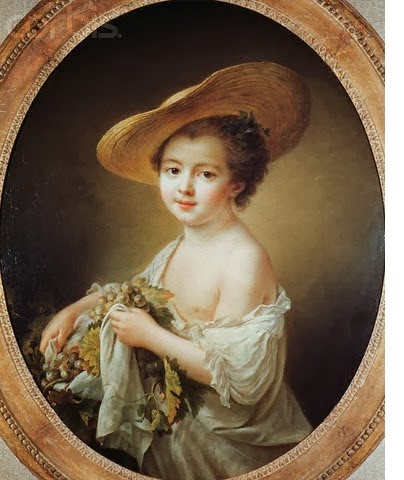This is Madame Helvétius played by Judith Magre in the HBO TV mini-series John Adams, which was first broadcast in the States in 2008. The series was brilliant, but the portrait of Minette and her gathering is unkind, intended mainly as a dramatic device to highlight the discomfiture of the sober and Anglophone John Adams among the dissolute, sophisticated French. I'm not quite sure why Madame H., who was a well-preserved woman in her early sixties, is made to look eighty; nor why everyone, including the men, are caked in quite so much make-up.
Here is the miserable Adams doing his best to shine at small talk with foreigners:
In a memorably comic scene, Adams inadvertently bursts in on Franklin playing chess in the bath with his hostess.
This bizarre event is not entirely apocryphal, though it did not involve Madame Helvétius, nor did it quite include a shared bath. Franklin reports in one of his letters that he and another neighbour, Claude-Guillaume Le Veillard, played chess together in the bathroom of Madame de Brillon while she looked on from the tub (presumably decently covered).
Cynics would say that Franklin enjoyed this over-intimacy with a much younger woman (she was still in her thirties). This impression is reinforced by Madame de Brillon's somewhat naive complaint to him that gossips had criticised the "sweet habit I have of sitting on your lap". According Franklin's biographer, Anne-Claude Lopez , however, their relationship was spiritually intense but physically chaste, the cumulative impression of their correspondence being of an old philosopher enjoying the company of a romantic young woman. (And, after all, who are we to doubt the motivation of a Founding Father?!)
References

On John Adams, see http://thebehindthescenes.blogspot.co.uk/2010/07/making-of-john-adams-hbo.html
For Franklin and Madame de Brillon: Anne-Claude Lopez, Mon Cher Papa: Franklin and the Ladies of Paris (1990) p.29-35..[Relevant pages available on Google Books]






























